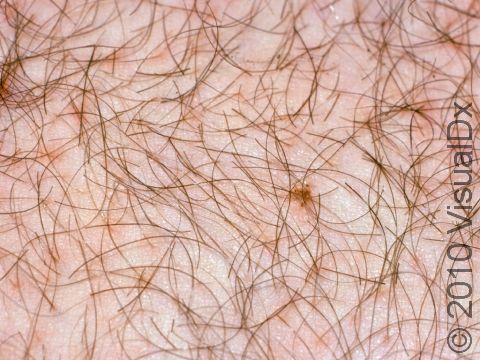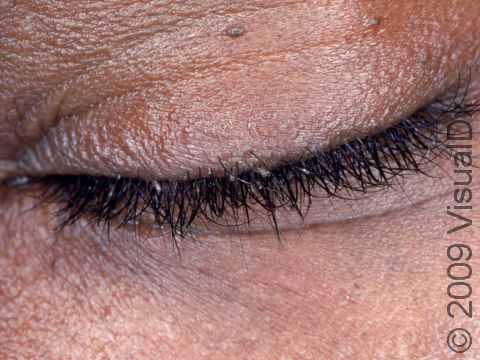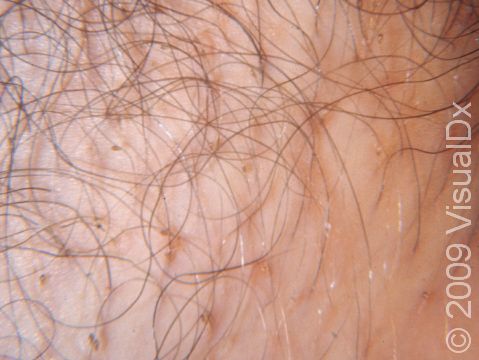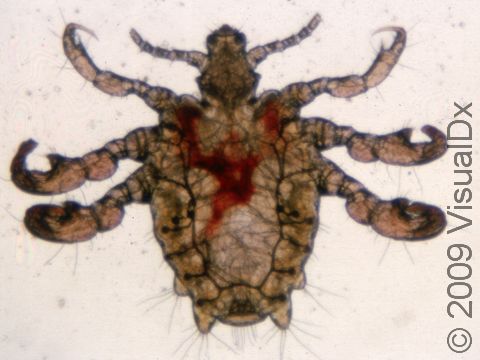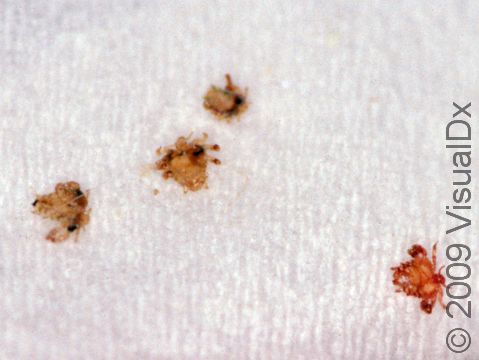Pubic Lice (Pediculosis Pubis)
Pubic lice (pediculosis pubis), also known as crab lice or crabs, is a louse (a type of wingless, bloodsucking insect) that can live and multiply (infest) on skin that grows pubic hair. Pubic lice most commonly affect the pubic hair, but other hair-bearing areas, such as the armpits and eyelashes, eyebrows, or scalp, may also be affected. The infestation usually causes itching, but it can occur without any symptoms. It is spread by close physical contact or contaminated clothing, bedding, or towels (fomites). Pubic lice infestations may occur with other sexually transmitted diseases.
Who's At Risk?
Men are more commonly affected by public lice, possibly because they have more coarse body hair.
This infestation is most frequent between the ages of 15–40 in people who are sexually active.
Signs & Symptoms
Lice and their eggs (nits) may attach themselves to the hair in the pubic region and other areas. Lymph nodes in the groin area may be swollen. Slate blue spots may be seen at the bite sites.
Self-Care Guidelines
Always use safe sex practices, including avoidance of intimate contact with partners affected with pubic lice.
Treatments
Your doctor may:
- Treat the infestation with permethrin cream rinse OR pyrethrins with piperonyl butoxide. Treatment with typical insecticides may be repeated after 1 week.
- Try malathion 0.5% lotion OR ivermectin, an oral medication, taken in one dose and repeated after 2 weeks.
- Treat any sex partners you have had within the previous month, as recommended by the Centers for Disease Control (CDC).
Your doctor should prescribe treatment for all infested hair-bearing areas to prevent the infestation from coming back. Eyelash involvement should not be treated with the above medications; an ophthalmic ointment is used instead.
Avoid sexual contact until you and your partner(s) have been treated and reevaluated to be sure the infestation is no longer present.
Visit Urgency
See your doctor for evaluation if you think you might have pubic lice.
Trusted Links
References
nia, Jean L., ed. Dermatology, pp.1326-1328. New York: Mosby, 2003.
Freedberg, Irwin M., ed. Fitzpatrick’s Dermatology in General Medicine. 6th ed. pp.2286, 2287-2289. New York: McGraw-Hill, 2003.
Last modified on October 11th, 2022 at 2:43 pm

Not sure what to look for?
Try our new Rash and Skin Condition Finder
